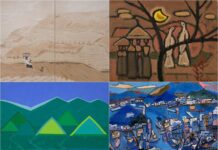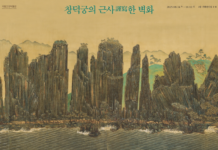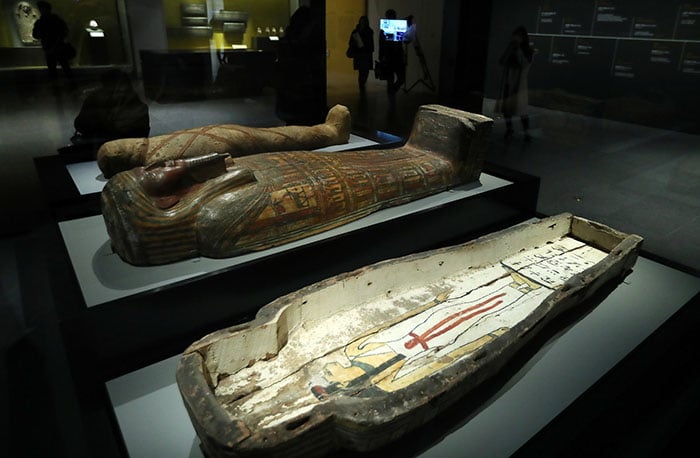
The Coffin of Thothirdes, from around 700-400 B.C., is displayed at the National Museum of Korea as part of an exhibit showcasing Egyptian Treasures from the Brooklyn Museum.
The ancient Egyptians believed that death marked the beginning of a journey to eternal life. The “Book of the Dead,” an ancient funerary text placed in the coffin or the burial chamber of the deceased, provides a glimpse into the beliefs of ancient people about the nature of death and the afterlife. The collection of texts and illustrations, comprising numerous spells and incantations, was made to assist a dead person’s journey through the underworld. As the final test, the dead person’s heart was weighed on a pair of scales against a feather, representing truth and justice. Only if the scales balanced, could the dead find a place in the afterlife.
Starting from Dec. 20, this ancient desire for immortality can be explored at an exhibition at the National Museum of Korea, featuring some 229 Egyptian treasures from the Brooklyn Museum. The collection includes mummies and coffins belonging to humans and animals, as well as artifacts that convey the originality, artistry and passion for eternal life of the ancient Egyptians.
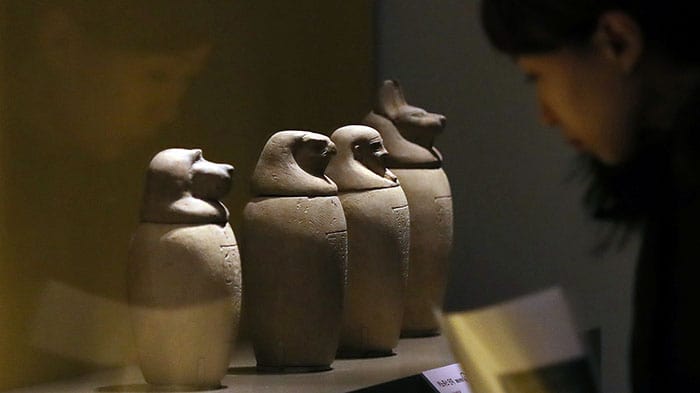
A visitor looks at a display of Canopic Jars, used by the ancient Egyptians during the mummification process to store and preserve the organs of their owner for the afterlife, at the ‘Egyptian Treasures’ exhibit underway at the National Museum of Korea.
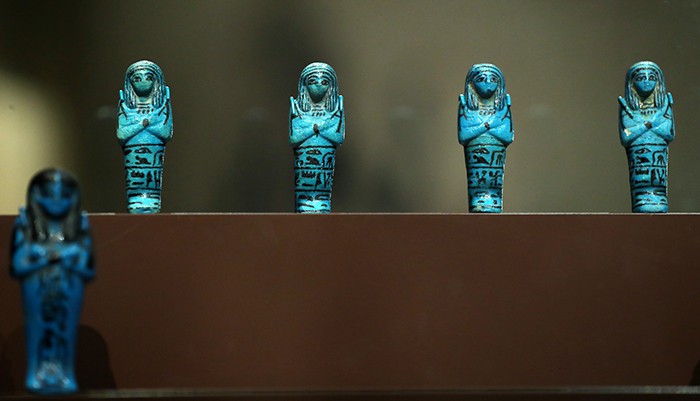
In ancient Egypt, funerary figurines called shabti dolls are buried with the dead, to act as servants or minions for the deceased in the afterlife. These dolls carry inscriptions asserting their readiness to answer the god’s summons to work.
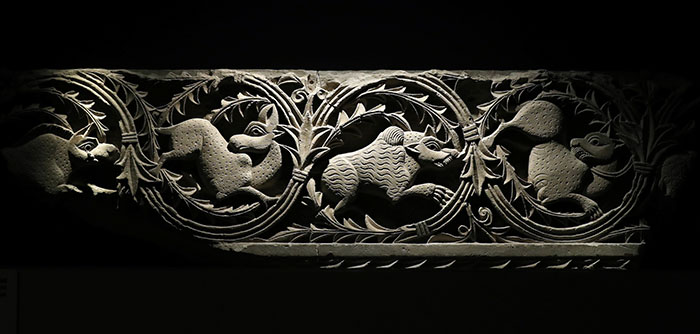
A ‘frieze of animals in plant scrolls’ from ancient Egypt depicts (from left) a wild boar, a gazelle, a hyena and a dog in motion.
The exhibit begins with an introduction to the ancient mythology that gave rise to the ancient Egyptians’ belief in the afterlife. It is said that when Osiris, the primeval king of Egypt, was murdered by his brother Set, Osiris’ wife Isis resurrected her husband’s body, transforming him into the god of the afterlife, the underworld and the dead. And so Osiris came to judge the weight of the soul’s heart in the hall of truth, to decide if the soul would be admitted into the bliss of eternity. Ancient Egyptians spent their lives planning their funerals, for this final day of judgment, eagerly awaiting the days of eternal glory.
In the ancient kingdom, everyone from commoners to aristocrats and royalty made preparations for the afterlife, mummifying the deceased and carrying out elaborate funerary rituals. The wealthy adorned their coffins with gold and jewels, while regular citizens made do with gold-plated ornaments and clay figurines painted in yellow. At the exhibit, visitors can take a look at some of these artifacts, from ornate coffins and mummy masks to Eye of Horus amulets. There are also displays of bejeweled ornaments, cremation tools, canopic jars used for storing organs, and shabti dolls that were believed to act as servants or minions for the deceased in the afterlife.
A highlight of the exhibit is the collection of mummified animals that offer a glimpse into the ancient Egyptian practice of worshipping animals deities. The ancient people believed that animals were created at the same time as humans, and thought that animals too had a place in the afterlife. Visitors can appreciate coffins and mummies of cats and ibises, as well as carvings of a number of deities in the form of a falcon, a cobra, a bull, and even a monkey.
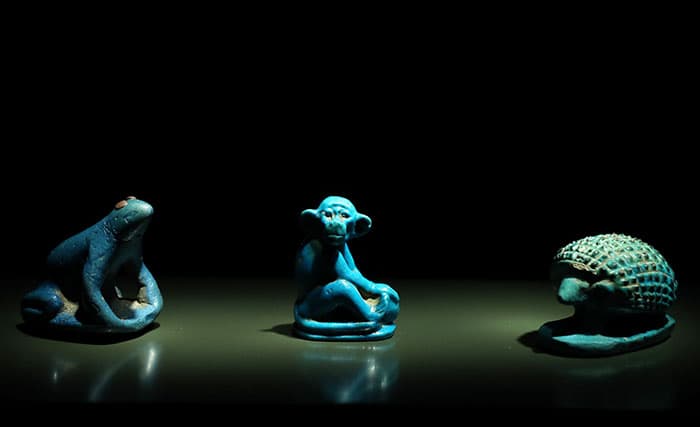
In ancient Egypt, animals were symbolic of human virtues. The frog symbolizes fertility and safe childbirth, while the monkey represents status and wealth. A hedgehog stands for resurrection.

Director of the Brooklyn Museum Anne Pasternak takes a look around the Egyptian Treasures exhibit before the grand opening at the National Museum of Korea on Dec. 19.
“The Brooklyn Museum has had a long relationship with the National Museum of Korea. The point of this exhibition was to bring one of the greatest collections of Egyptian art in the world to the Korean audience, and we’re honored to be showing an important part of our collection here in Korea,” said Director of the Brooklyn Museum Anne Pasternak.
“This is an exhibition of great wonder and discovery, and regardless of where you come from in life, you will find connections with the ancient Egyptians. Through the exhibit, visitors will get a chance to explore the belief systems of ancient Egypt’s wealthiest families as well as its common people. The exhibit is a chance to see ourselves reflected in the ancient past,” she continued.
The Egyptian Treasures exhibition continues until April 9 next year. The entrance fee is KRW 13,000 for adults, KRW 11,000 for university and high school students and KRW 8,000 for elementary school students.
By Lee Hana
Korea.net Staff Writer
Photos: Jeon Han, Korea.net Photographer
hlee10@korea.kr


